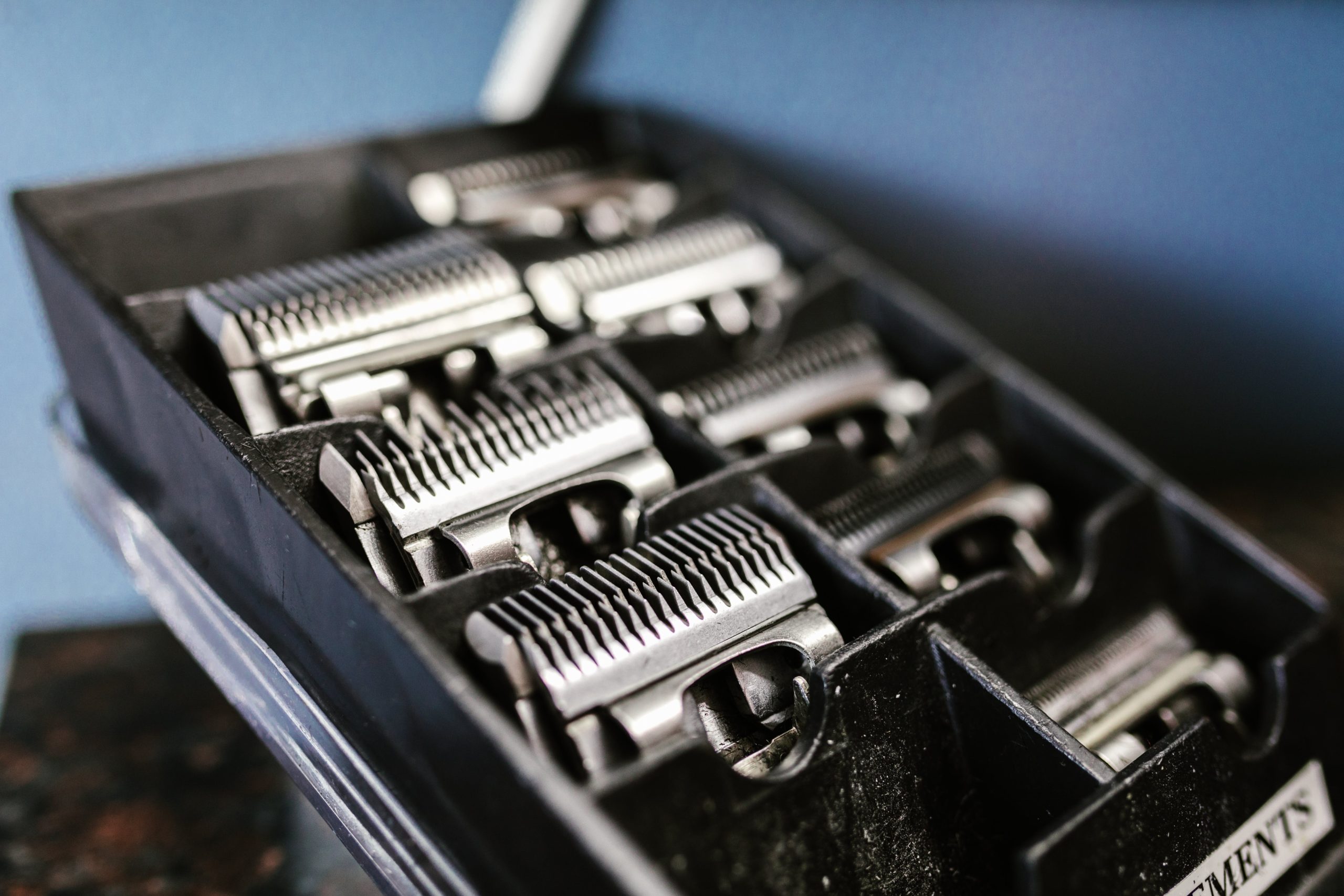If you’ve ever wondered about the magic behind podcasting and how those crystal-clear voices reach your ears, then you’re in for a treat! Ever heard of Omni microphones? These little wonders are the unsung heroes of the podcasting world, ensuring that every word spoken is captured with utmost clarity. Omni microphones, also known as omnidirectional microphones, are specially designed to pick up sound from all directions, making them ideal for recording interviews, group discussions, or podcast episodes where multiple speakers are involved. With their ability to capture the full range of audio, you’ll feel like you’re right in the middle of the conversation, no matter where you’re listening from. Time to unravel the secrets of these remarkable devices and discover their impact on the podcasting experience!

Understanding Omni Microphones
Basics of Omni Microphones
Omni microphones, also known as omnidirectional microphones, are a popular choice in various audio recording settings due to their unique capability to capture sound from all directions. Unlike other types of microphones that are designed to focus on a specific sound source, omni microphones have equal sensitivity to sound arriving from any angle. This characteristic makes them highly versatile and suitable for a wide range of applications, including podcasting, music production, field recordings, live performances, conferences, and interviews.
How Omni Microphones Work
Omni microphones utilize a circular or spherical pickup pattern, enabling them to capture sound evenly from all directions. This is achieved by using a diaphragm that is equally responsive to sound pressure variations from any angle. The diaphragm is mounted within the microphone at the front, typically protected by a fine mesh grill. As soundwaves reach the diaphragm, they cause it to vibrate, converting the acoustic energy into electrical signals that can be amplified and recorded.
Difference Between Omni Microphones and Other Types
The key distinction between omni microphones and other types, such as cardioid or directional microphones, lies in their pickup patterns. While cardioid microphones focus on capturing sound primarily from the front and have reduced sensitivity to sounds from other angles, omni microphones are designed to equally capture sound from all directions. This makes omni microphones ideal for situations where capturing ambient sounds or a broader sonic environment is desirable, offering a more natural and immersive listening experience.
Uses of Omni Microphones in Podcasting
Enhancing Podcast Audio Quality
Omni microphones are excellent tools for improving the audio quality of podcast recordings. By capturing sounds from all directions, these microphones can pick up on the subtle nuances of the surrounding environment, providing listeners with a more immersive experience. Whether you’re recording in a professional studio or a home setup, using an omni microphone can help elevate the production value of your podcasts and make them stand out in a crowded podcasting landscape.
Use in Solo Podcasting
For solo podcasters, omni microphones can be an invaluable asset. Solo podcasting often involves various forms of storytelling or monologues, and using an omni microphone allows you to capture your voice and the room’s natural acoustics with ease. This creates a more intimate and authentic listening experience, allowing your audience to feel like they are right there with you, engaging in a personal conversation.
Use in Multiple Speaker Podcasts
In podcasts where multiple speakers participate in discussions or interviews, omni microphones can be a practical choice. Placing omni microphones at strategic positions between the speakers helps ensure that all participants are equally and consistently captured, regardless of their position or orientation to the microphone. This eliminates the need for constant adjustments or repositioning, allowing the conversation to flow naturally while maintaining audio clarity throughout the podcast.
Omni Microphones in Interviews
Advantages for Interview Sessions
Omni microphones offer several advantages in interview sessions. When conducting interviews, it’s essential to capture the interviewee’s responses accurately, ensuring their voice is loud and clear. Omni microphones excel in capturing sound from all directions, eliminating the need for precise positioning by the interviewee. This offers more flexibility and ease of use, as the interviewee can freely move or gesture without worrying about speaking directly into the microphone. Additionally, omni microphones minimize the risk of capturing inconsistent audio levels due to unintentional variations in the interviewee’s speaking position.
When Not to Use Omni Microphones in Interviews
While omni microphones have their advantages, there are situations where they may not be the ideal choice for interviews. In environments with significant ambient noise or background distractions, omni microphones may pick up unwanted sounds, potentially compromising the clarity and focus of the interviewee’s voice. In such cases, using a directional or shotgun microphone with a narrower pickup pattern can help reduce background noise and enhance the overall audio quality, ensuring a more isolated and focused interview recording.
Omni Microphones in Music Production
Applications in Recording Studios
In the realm of music production, omni microphones find their utility in various applications within recording studios. When capturing vocals or instruments, especially when a more natural and immersive sound is desired, omni microphones can be an excellent choice. They effectively capture the full-bodied character and tonal nuances of the performance while preserving the ambient sound of the recording environment. This can add depth and dimension to the recorded tracks, resulting in a more authentic and vibrant listening experience.
Effect on Perception of Sound
The use of omni microphones in music production can significantly impact the perception of sound. By capturing sound from all directions, omni microphones create a sense of spaciousness and naturalness, giving the listener a more true-to-life representation of the recorded performance. This effect can be particularly advantageous when recording live performances or orchestral music, where capturing the full sonic landscape and ambiance is crucial for recreating an immersive listening experience.

Omni Microphones for Field Recordings
Capturing Ambience and Background Noises
Field recordings often require capturing the essence of a particular location or environment, including its ambience and background noises. Omni microphones excel in this aspect, providing a broader and more accurate representation of the soundscape. Whether you’re recording nature sounds, cityscapes, or any other environmental audio, omni microphones ensure that you capture the full spectrum of sounds surrounding you, preserving the spatial and tonal qualities of the field recording.
Use in Film and Television Production
Omni microphones also play a crucial role in film and television production. Their ability to capture sound from all directions makes them ideal for capturing dialogue or scenes with multiple sound sources. By using omni microphones strategically, filmmakers can accurately capture the audio elements needed for post-production, allowing for precise control and manipulation during the editing process. From capturing atmospheric sounds to dialogue in noisy or dynamic environments, omni microphones provide sound engineers and editors with versatile and reliable audio material.
Omni Microphones in Live Performances
Benefits in Live Music Events
In live music events, omni microphones offer several benefits. In settings where there are multiple performers or instruments, omni microphones can capture a wider soundscape, capturing the entire ensemble’s sound naturally and transparently. This enhances the overall listening experience for the audience, making them feel immersed in the live performance. Additionally, since omni microphones are less sensitive to proximity effect, they allow performers to move more freely without compromising sound quality, offering increased flexibility and stage presence.
Drawbacks in Noisy Environments
While omni microphones thrive in capturing natural soundscapes, they may face challenges in noisy environments. In situations where there are high levels of background noise or ambient sound, omni microphones may pick up unwanted distractions that can detract from the primary performance. In these cases, using other types of microphones with more directional pickup patterns, such as dynamic or cardioid microphones, can help isolate the sound source and minimize the impact of surrounding noise, ensuring a more focused and crisp sound in live performances.

Omni Microphones in Conferences and Meetings
Capturing Sound from All Directions
In conferences and meetings, the ability to capture sound from all directions is crucial for accurately documenting and preserving the discussions and presentations. Omni microphones excel in this scenario, ensuring that every participant’s voice is recorded with equal clarity despite their position or orientation. This eliminates the need for individual microphones for each participant and allows for a more seamless and immersive recording experience. Omni microphones enable listeners to feel part of the conversation, even when they are not physically present.
Consideration of Room Acoustics
When using omni microphones in conferences and meetings, it’s essential to consider the room acoustics. Since omni microphones capture sound equally from all directions, they have a higher potential for picking up room reflections, reverberation, and background noise. To optimize the quality of the recorded audio, it is advisable to choose a room with favorable acoustics, such as minimal reverb and noise, or use proper sound insulation and acoustic treatments to minimize unwanted sound reflections and enhance speech clarity.
Technological Aspects and Features of Omni Microphones
Understanding Polar Pattern
The polar pattern of a microphone refers to its sensitivity to sound coming from different directions. For omni microphones, the polar pattern is omnidirectional, meaning they have equal sensitivity to sound arriving from all angles. This distinguishes them from directional microphones, which have a more limited pickup pattern focused on specific areas. By understanding the polar pattern of omni microphones, you can effectively position them for optimal sound capture and achieve the desired sound quality in your recordings.
Pick-Up Patterns and Sensitivity
Another crucial aspect of omni microphones is their pickup patterns and sensitivity. Omni microphones have a uniform pickup pattern that captures sound from all directions with equal sensitivity. This allows for a more balanced and accurate representation of the surrounding audio environment. However, it is important to note that omni microphones are generally more sensitive compared to directional microphones, making them more prone to capture background noise or unwanted ambient sounds. Therefore, careful consideration should be given to the microphone’s position and the surrounding environment to achieve optimal sound isolation and minimize potential noise interference.

Tips for Using Omni Microphones Effectively
Optimal Placements for Sound Capture
To maximize the effectiveness of omni microphones, proper microphone placement is crucial. Placing omni microphones at an appropriate distance from the sound source ensures that the desired sound is captured clearly without any distortion or unwanted noise. Experimenting with different microphone positions and distances can help achieve the desired balance between the sound source and ambient sounds, allowing you to create a recording that accurately represents the sonic environment.
Effective Usage for Desired Sound Quality
In addition to proper placement, understanding how to effectively use omni microphones can have a significant impact on the desired sound quality. Utilizing pop filters or windshields can help minimize plosive sounds or wind noise, ensuring cleaner recordings. Adjusting the microphone gain or sensitivity settings can also help balance the captured sound, preventing clipping or distortion. Regularly monitoring the sound during recording allows for real-time adjustments and helps capture a high-quality audio signal that meets your specific requirements.
Choosing the Right Omni Microphone
Factors to Consider
When choosing an omni microphone, several factors need to be considered to ensure it meets your specific needs. These factors include the intended application, budget, recording environment, and personal preferences. Different omni microphones offer varying features and specifications, such as frequency response, impedance, and signal-to-noise ratio. It is advisable to thoroughly research and compare different models, read user reviews, and consult with audio professionals to select the omni microphone that best suits your requirements and delivers the desired sound quality.
Top Rated Omni Microphones
There are several highly regarded omni microphones available on the market today. Some top-rated models include the Neumann KM 183, Audio-Technica AT4050, DPA 4060, and Sennheiser MKH 8020. These microphones are known for their exceptional sound quality, durability, and versatility, making them popular choices among professionals in various audio recording fields. However, it is essential to evaluate and compare different options based on your specific needs and budget before making a final decision.
